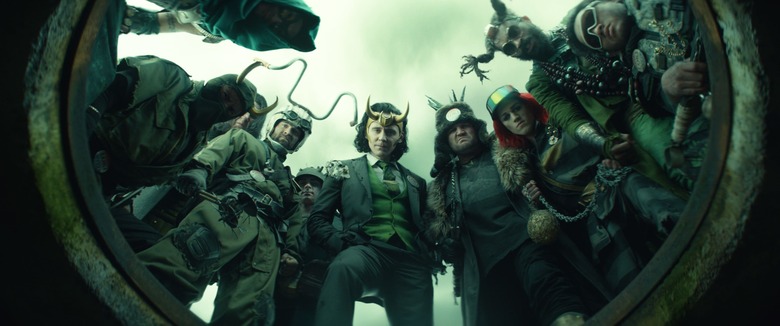'Loki' Writer's New Explanation Is Key To Understanding The MCU Multiverse
Loki unleashed the multiverse, with the finale cementing the idea that we're going to see more of the multiverse in the immediate MCU future. That's not a spoiler, as we always knew that Loki is a multiverse story. From the trailers, we learned the TVA arrested the Loki (Tom Hiddleston) when he escaped with the Tesseract in Endgame's biggest loose end. Now that Loki is over, we know exactly what happened with this God of Mischief variant. But we care more about understanding the multiverse rules in light of several upcoming MCU attractions that will deal with the concept.
We already saw a few explanations from Loki director Kate Herron, and we have plenty of theories to understand the implications of Loki's finale. Michael Waldron, the head writer for Loki, just provided further assistance. He explained in an interview that the multiverse was always there, staring us in the face. We just didn't know how to understand it. Mind you, some Loki spoilers might follow below.
Forget chronology
We learned the rules of Marvel's MCU multiverse as we got deeper and deeper in Loki. But it's a key event from the finale that made me realize I had to forget about the chronology of events to make sense of the multiverse. It's that citadel at the end of time where the first Kang (Jonathan Majors) version appears. This holds the key to understanding it.
We all perceive and understand time by looking at things chronologically. That's why we try to establish the order of events between Endgame and Loki, and look for correlations.
But when we're in that citadel listening to Majors' monologue about the MCU multiverse, we're all sitting outside the flow of time. Chronology doesn't matter. When we look at the Sacred Timeline, everything occurs simultaneously. There's no past, present, or future. From our vantage point, all those events happen simultaneously. The people involved do not perceive them this way because they're inside the flow of time.
That's why Kang allows Loki and Sylvie (Sophia Di Martino) to decide the future of the TVA. And when they do, we see the Sacred Timeline branching in different places at the same time. The TVA just can't intervene at that moment to prune all those branches. As a result, they grow beyond the point of no return.

The Sacred Timeline starts branching off in Loki finale.
The MCU multiverse was there before Loki
Waldron explained this concept to ScreenCrush. Here's the exact question the blog asked:
So my question is if there is the one "Sacred Timeline" of the Marvel Universe that the TVA has been protecting for some significant stretch of time, then how can there also be so many alternate timelines and variants as well?
Here's Waldron's response that all MCU fans should check out:
Okay, The best I can explain it is our approach with time travel was the philosophy basically that time is always happening. So there are infinite instances of time always occurring at once. So you and I are having this conversation right now. There's another instance of us having this conversation 10 seconds ago. There's another instance of time of us having this conversation 10 seconds in the future. Generally, those three instances — you could literally say they're all different universes in a way different timelines — are all the same.
There are minute little fluctuations in each instance of time. So in you and I's conversation, five times out of ten, I pick up and I say, 'Hello.' And four times out of ten, I say, 'Hey, nice to meet you.' And then maybe one time out of ten, I'd say, 'Hey man, f— you. I don't want to do this interview.'
And that's just how time works. There's always like different permutations and instances happening. The TVA has their own barometer, their own gauge of what constitutes a deviation from the baseline, the way it's supposed to go. The way it went that produced He Who Remains. That is their baseline. And so they are constantly calculating, 'Okay, we see how time has always...'
If you zoomed in on the timeline, it wouldn't necessarily look like a straight line. It might look like almost the intertwined strands of a rope fluctuating and spiking here and there. When it becomes a problem for the TVA is when, according to their own rules, when could something branch off in a way that it could actually produce a new timeline that could produce a new version of He Who Remains? That is the practical thing that they're guarding against. Does that answer your question?
That doesn't cover everything about the MCU multiverse. But it certainly provides more context about the new rules that Marvel is trying to establish.
